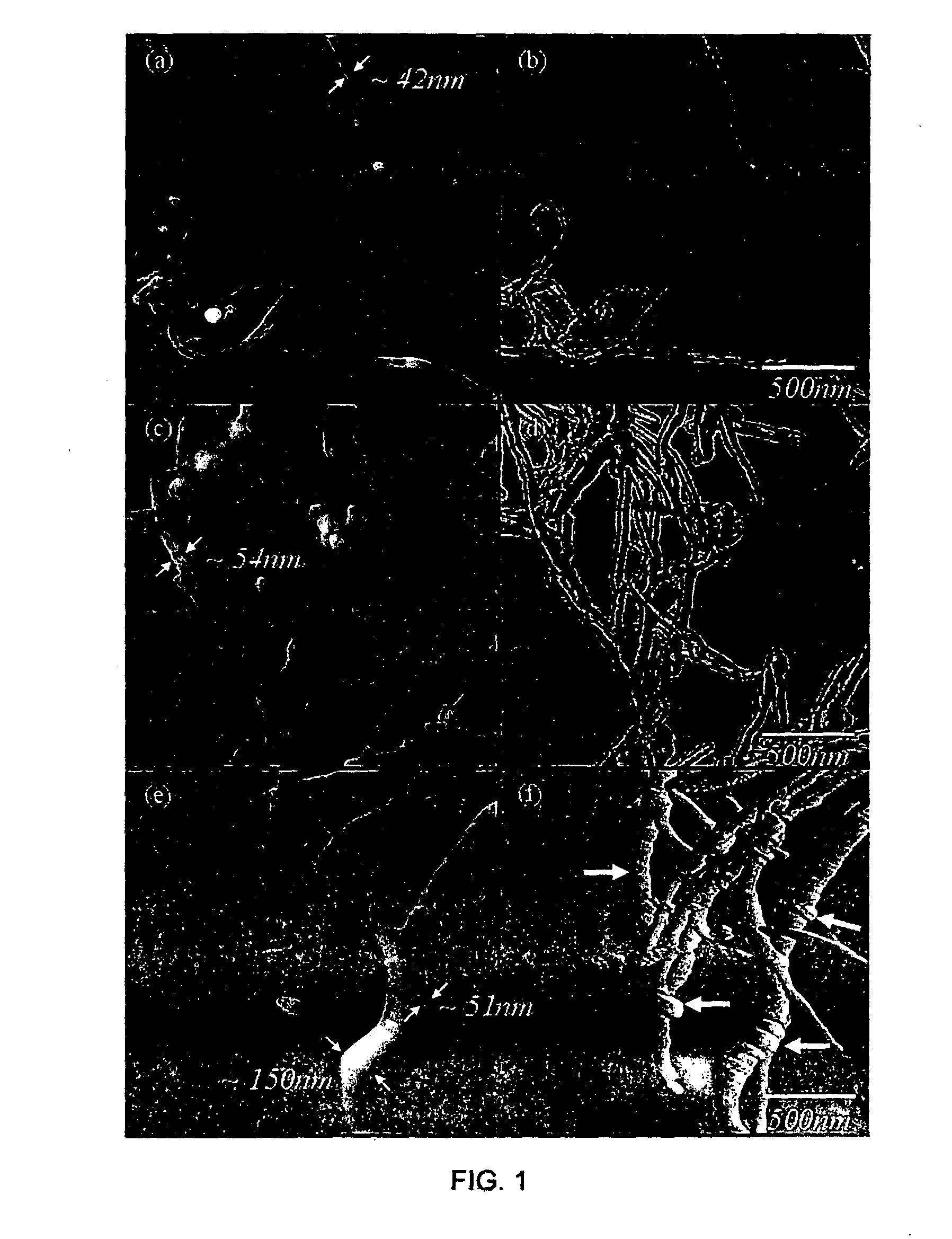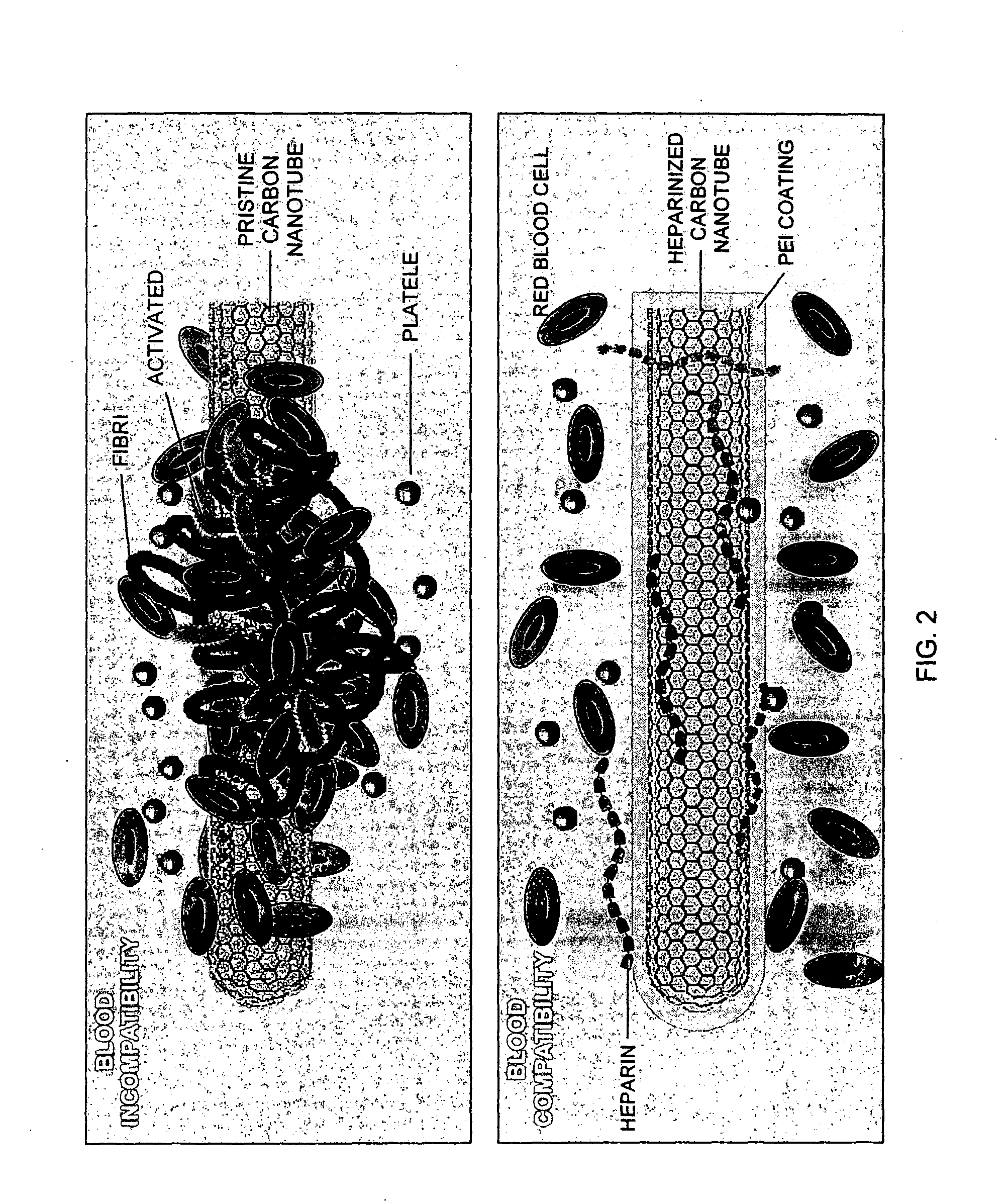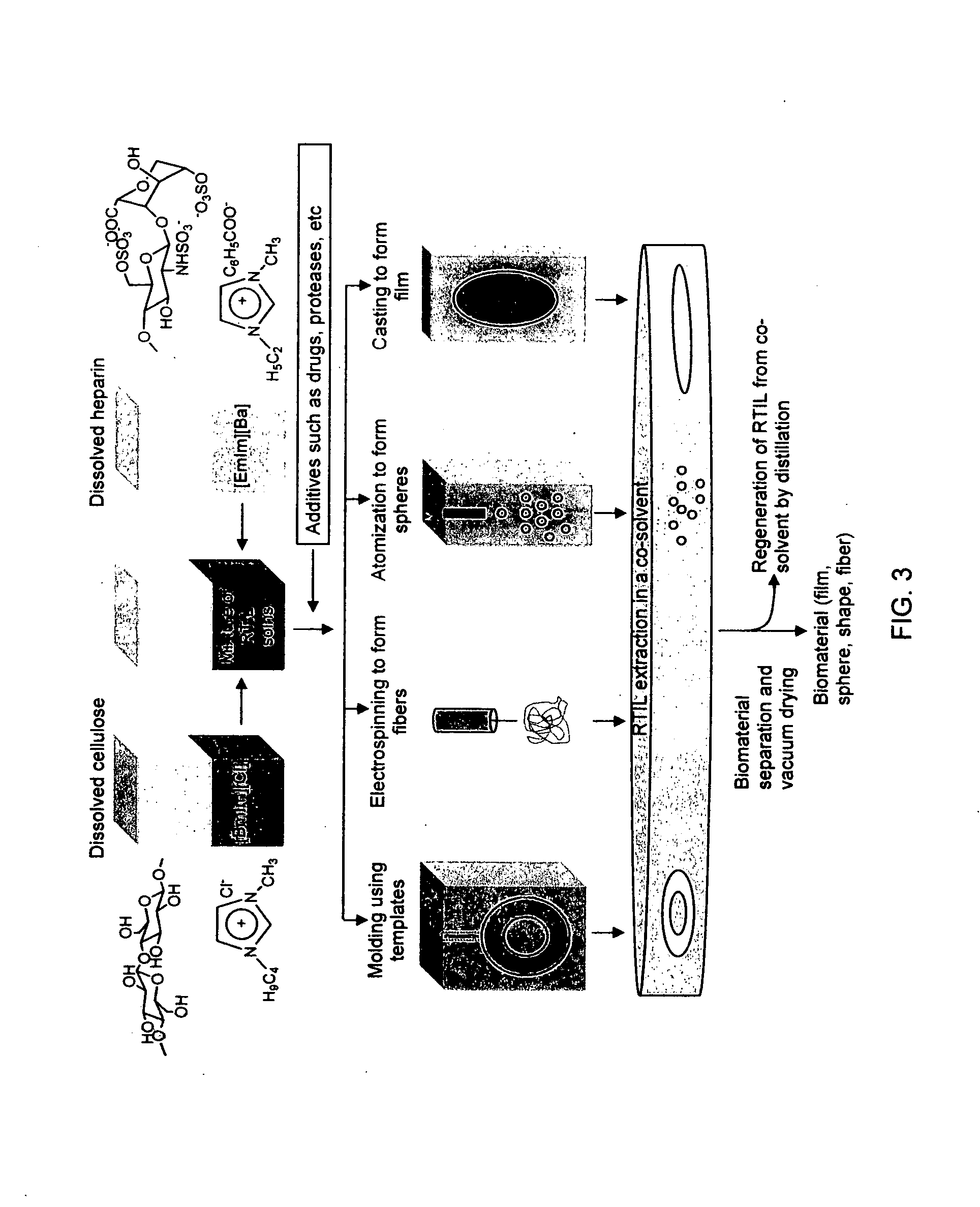Blood compatible nanomaterials and methods of making and using the same
a technology of nanomaterials and blood, applied in the field of blood compatible nanomaterials and methods of making and using the same, can solve the problems of patent's ability to control bleeding, heart attack, lung failure, stroke, etc., and achieve the effect of improving the ability of blood circulation control
- Summary
- Abstract
- Description
- Claims
- Application Information
AI Technical Summary
Problems solved by technology
Method used
Image
Examples
example 1
Preparation of Neoproteoglycans
Introduction:
[0052]The present invention replaces the core protein of proteoglycans (PGs) with carbon nanotubes (CNTs) to afford highly stable neo-PGs for functional and structural studies. CNTs represent one of the most widely used building blocks for nanodevices and have also been successfully used as solid supports for biofunctionalization. CNTs with their unique structural, electronic and mechanical properties have an enormous number of applications in making various materials including nanotube polymeric composites, electronic and optical devices and enzyme / catalytic supports. CNTs, because of their high surface volume ratio, are also useful in making enzyme immobilized biosensors. Nanotubes are often preferred over metallic or non-metallic nanoparticles for biomedical applications because of their larger inner volume, distinct inner and outer surfaces and open mouths. These properties enable the filling of nanotubes with desired species (small mo...
example 2
Ionic Liquid Derived Blood Compatible Composite
[0069]Introduction
[0070]A novel heparin and cellulose based biocomposite is fabricated by exploiting the enhanced dissolution of polysaccharides in room temperature ionic liquids (RTILs). This represents the first reported example of using a new class of solvents, RTILs, to fabricate blood compatible biomaterials. Using this approach, it is possible to fabricate the biomaterials in any forms such as films / membranes, fibers (nanometer or micron sized), spheres (nanometer or micron sized) or any shape using templates. A membrane film of this composite is evaluated as follows. Surface morphological studies on this biocomposite film showed the uniformly distributed presence of heparin throughout the cellulose matrix. Activated partial thromboplastin time and thromboelastography demonstrate that this composite is superior to other existing heparinized biomaterials in preventing clot formation in human blood plasma and in human whole blood. M...
example 3
Preparation of Blood Compatible Fibers by Electrospinning from Room Temperature Ionic Liquids
[0088]Introduction:
[0089]Electrospinning is a widely used simple technique to prepare micron to nanometer sized fibers of various polymers. Electrospun fibers find applications in the making of fiber-reinforced composites, membranes, biosensors, electronic and optical devices and as enzyme and catalytic supports. Electrospinning technique is useful even in large scale manufacturing environments such as textile industries. A variety of novel tissue engineering scaffolds have been prepared by electrospinning various synthetic and natural biodegradable polymers. However, the range of the polymers that can be electrospun is still limited by the availability of volatile solvents and their limited capability of dissolving polymers of different types. In this example, making electrospun fibers from a relatively novel solvent system—room temperature ionic liquids (RTILs) is described. RTILs have bec...
PUM
| Property | Measurement | Unit |
|---|---|---|
| concentration | aaaaa | aaaaa |
| concentration | aaaaa | aaaaa |
| diameter | aaaaa | aaaaa |
Abstract
Description
Claims
Application Information
 Login to View More
Login to View More - R&D
- Intellectual Property
- Life Sciences
- Materials
- Tech Scout
- Unparalleled Data Quality
- Higher Quality Content
- 60% Fewer Hallucinations
Browse by: Latest US Patents, China's latest patents, Technical Efficacy Thesaurus, Application Domain, Technology Topic, Popular Technical Reports.
© 2025 PatSnap. All rights reserved.Legal|Privacy policy|Modern Slavery Act Transparency Statement|Sitemap|About US| Contact US: help@patsnap.com



